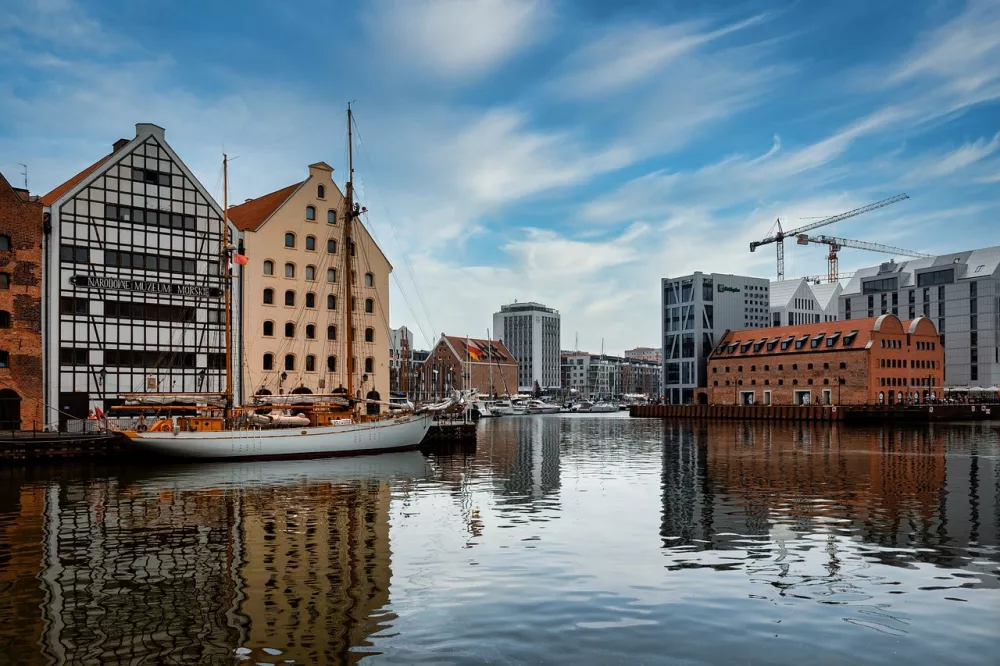Gdańsk - guide 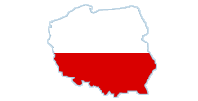
This port city on the Baltic Sea was once Poland’s richest city and a member of the famous Hanseatic League. Today, it will amaze you with its renovated Old Town, where Dutch style blends with Polish soul – from Long Street (Długa) to the iconic Neptune Fountain. Stroll along the Motława River to the historic Crane (Żuraw), taste local pierogi or sip the famous gold-leafed Goldwasser liqueur. And if you like stories, know that it was here that World War II began and the Solidarity movement was born, which changed the history of Europe.
Sights and attractions - What should you visit in Gdańsk? Old Town, Dlouhá Street, Neptune's Fountain,...
Accommodation - Where to stay in Gdańsk? In the historic center or in the countryside outside the center? In a luxury hotel, guesthouse or hostel?
Typical food and drink - What to try in Gdańsk - certainly various fish dishes, borscht, beer,...
Practical tips - Here you can learn more about local transport, the best way to get to Gdańsk, what to pack for your trip, etc.
Weather - What temperatures and rainfall to prepare for in the four seasons in Gdańsk?
Celebrities - What famous personalities lived and worked in Gdańsk?
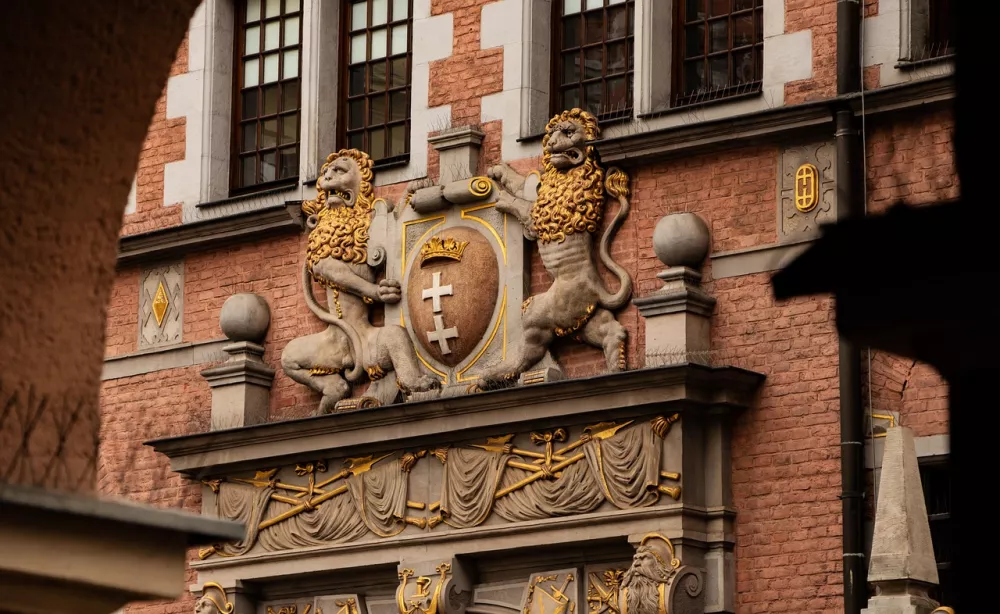
Gdańsk, a major city in northern Poland, is located on the Baltic Sea coast at the mouth of the Vistula River. It has a rich history and is one of the most important port cities in the country.
It belongs to Trójmiast (Triple Cities), an agglomeration that also includes the cities of Gdynia and Sopot.
Gdańsk has a long and complex history that dates back to the Middle Ages. In different periods it belonged to different powers - the Kingdom of Poland, the Kingdom of Prussia and then Germany.
In 1945, after World War II, Gdańsk became part of Poland again.
Approximately 470,000 inhabitants live in Gdańsk. This ranks it among the six largest cities in Poland.
Gdańsk is one of the most important economic centers, mainly thanks to its port. The city is also a center of shipbuilding, petrochemical industry and technology.
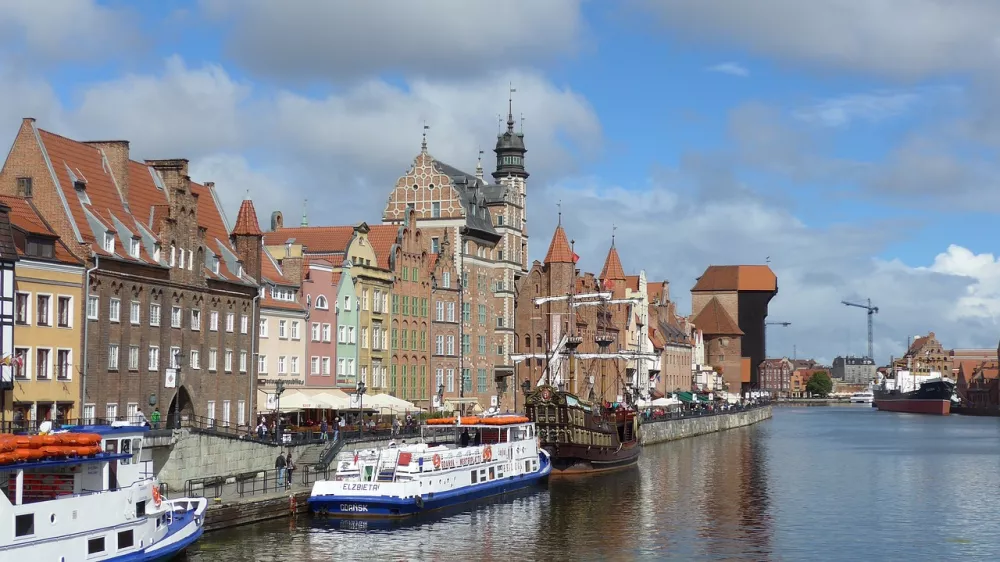
It is home to many cultural institutions, including theatres, museums and galleries. There is also University of Gdansk here. The city also hosts various festivals and cultural events, such as the summer St. Dominic's Fair.
Tourists are attracted here by the historic center of Gdańsk with beautiful buildings and cobbled streets, Žuraw (a historic port crane and a symbol of the city) or perhaps the Museum of the Second World War (a modern museum that offers an extensive exposition dedicated to the events of the Second World War).
Gdańsk Lech Wałęsa International Airport provides connections to many European cities. The city is also well connected with other parts of Poland and Europe by rail and road connections.
Sights and attractions
Old Town (Stare Miasto) - The historic center of Gdańsk, which had to be largely rebuilt after World War II. Here you will find many beautiful buildings and streets with a rich history. For example, there is the Church of St. Catherine from the 13th century, the oldest surviving church in Gdańsk. In the church tower there is the largest carillon in this part of Europe, weighing over 17 tons and consisting of 50 bells.
Address: Korzenna 33/35, Gdańsk.
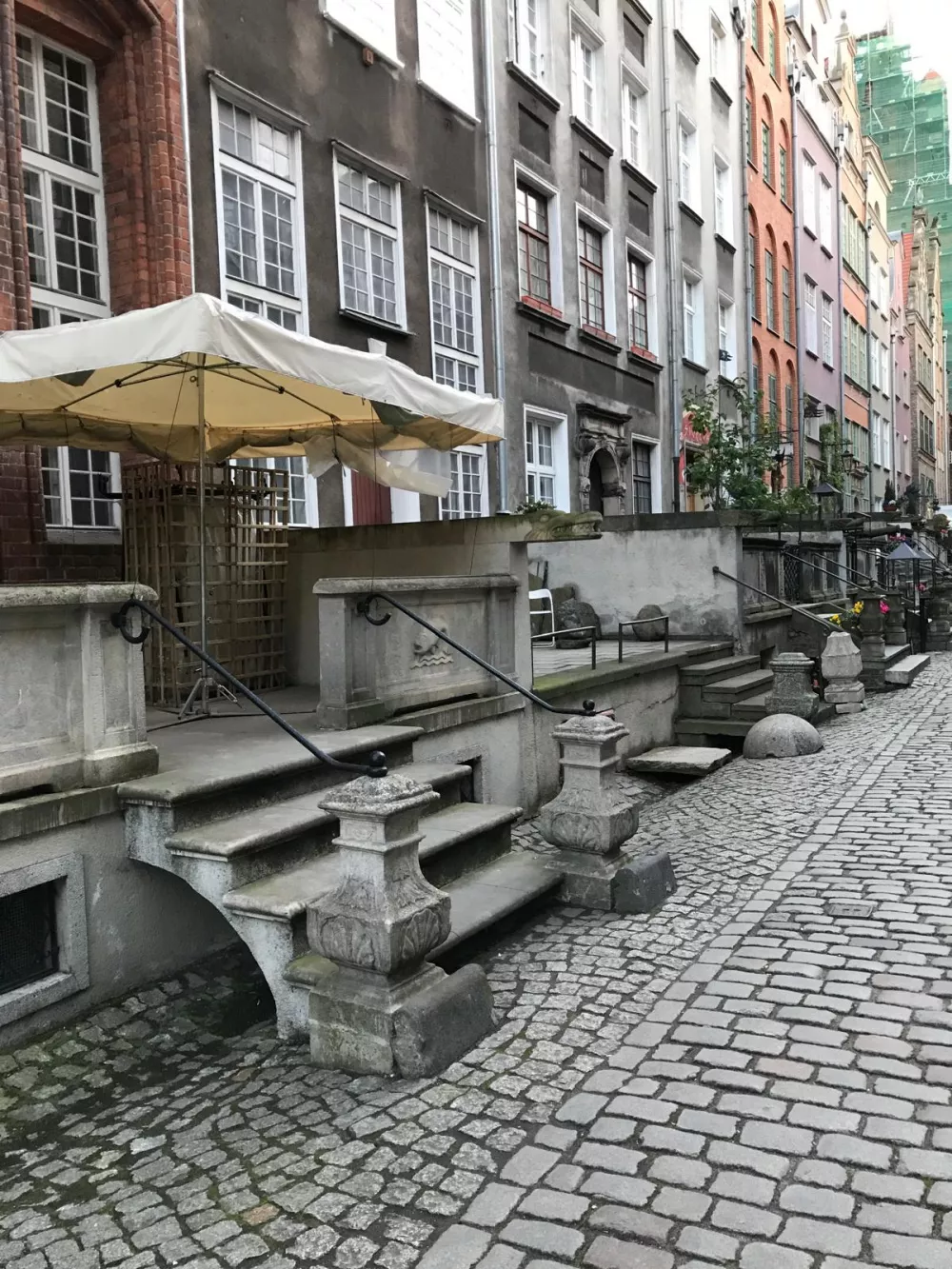
Long Street (Ulica Długa) and Long Market (Długi Targ) - The main pedestrian zone in the city center. Dlouhá Street starts at the Golden Gate and leads to the Main Town Hall, where it connects to the Long Market, which continues to the Green Gate by the Motlawa River. The promenade is lined with beautiful Renaissance and Baroque townhouses that once belonged to Gdańsk's richest merchants and nobles, such as the 18th-century Uphagen House or Artus Court, the former seat of the merchant brotherhoods.
Address: Dlouhá Street, Dlouhá Market, Gdańsk.
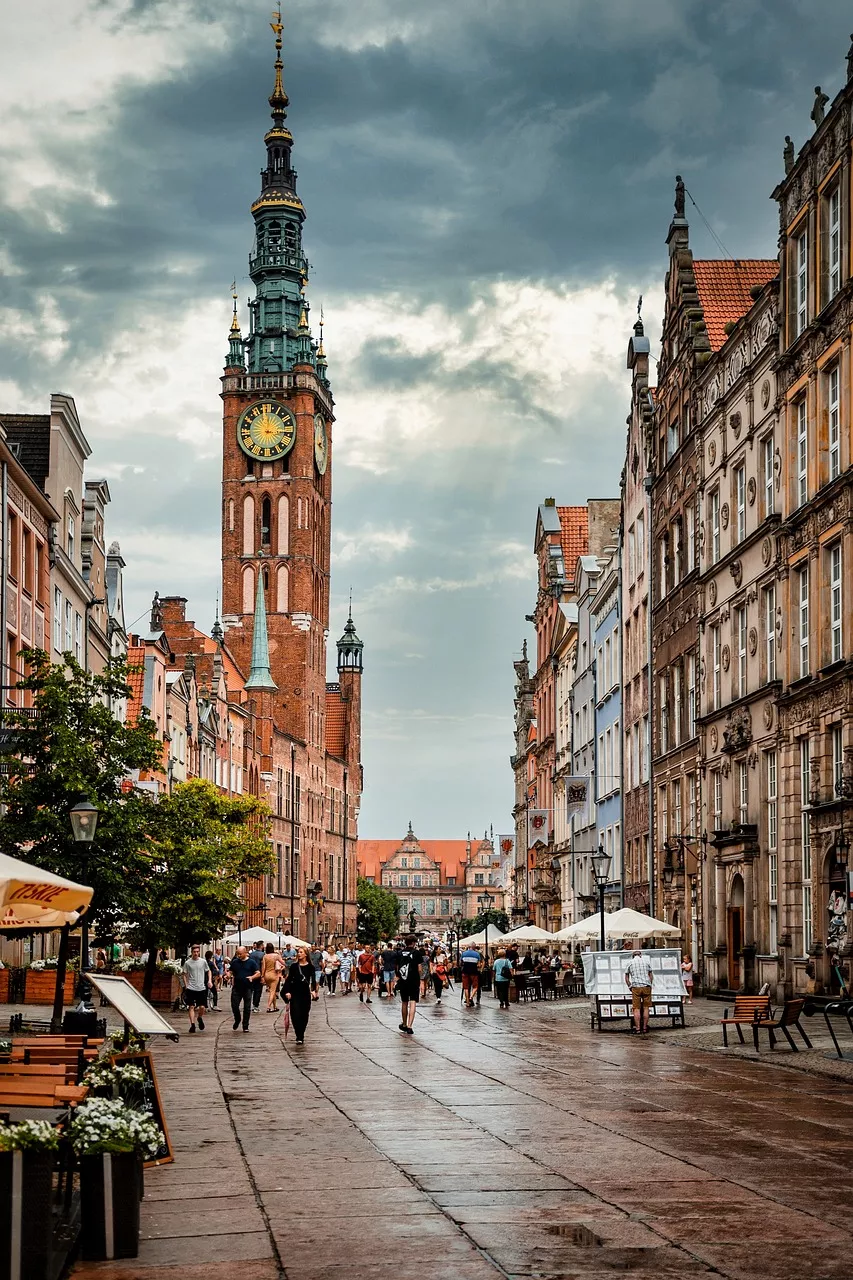
Neptune's Fountain (Fontanna Neptuna) - The iconic fountain with the statue of Neptune from the early 17th century, one of the symbols of Gdańsk. The bronze statue of Neptune, god of the sea, stands at the top of the fountain and weighs approximately 650 kg. The fountain is located in the Long Market. It symbolizes Gdańsk's connection with the sea and its rich maritime history. According to legend, Neptune smashed coins thrown into the fountain with his trident, creating the famous Gdańsk liqueur Goldwasser with gold flakes.
Address: Long Market, Gdańsk.
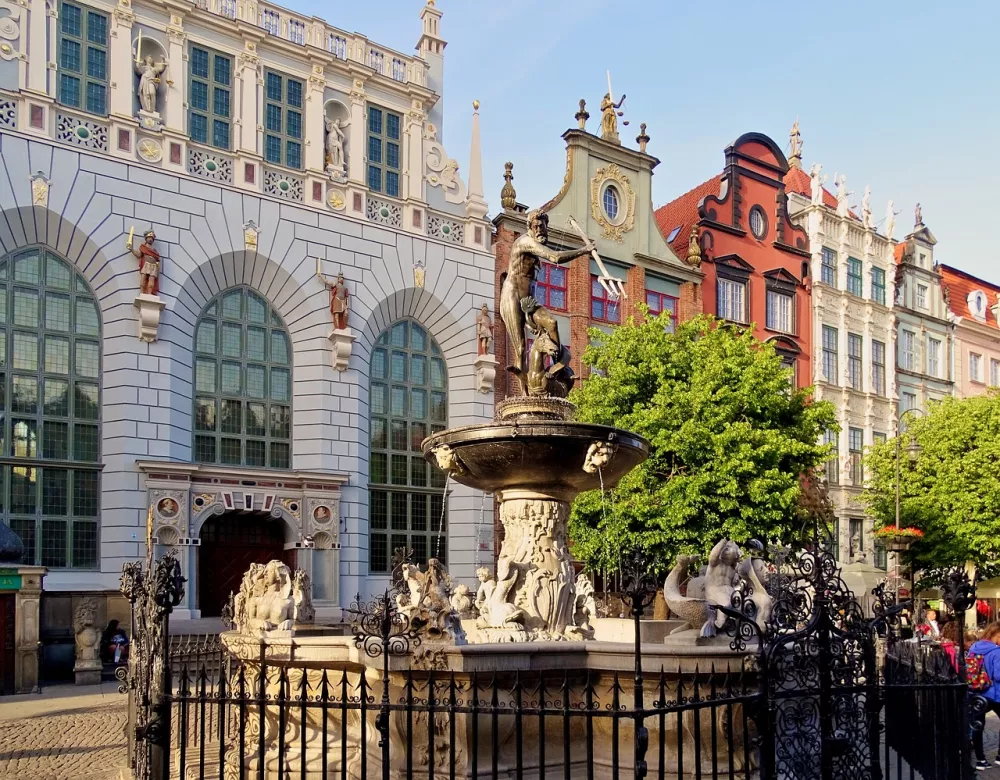
Golden Gate (Złota Brama) - The entrance gate on Long Street was built in 1612–1614 by the architect Abraham van den Blocke in the Dutch Mannerist style. He was inspired by the ancient Roman triumphal arch. The gate is decorated with statues representing the virtues and values of the city - peace, freedom, prosperity, glory, wisdom, piety, justice and harmony.
Address: Long Street 1, Gdańsk.
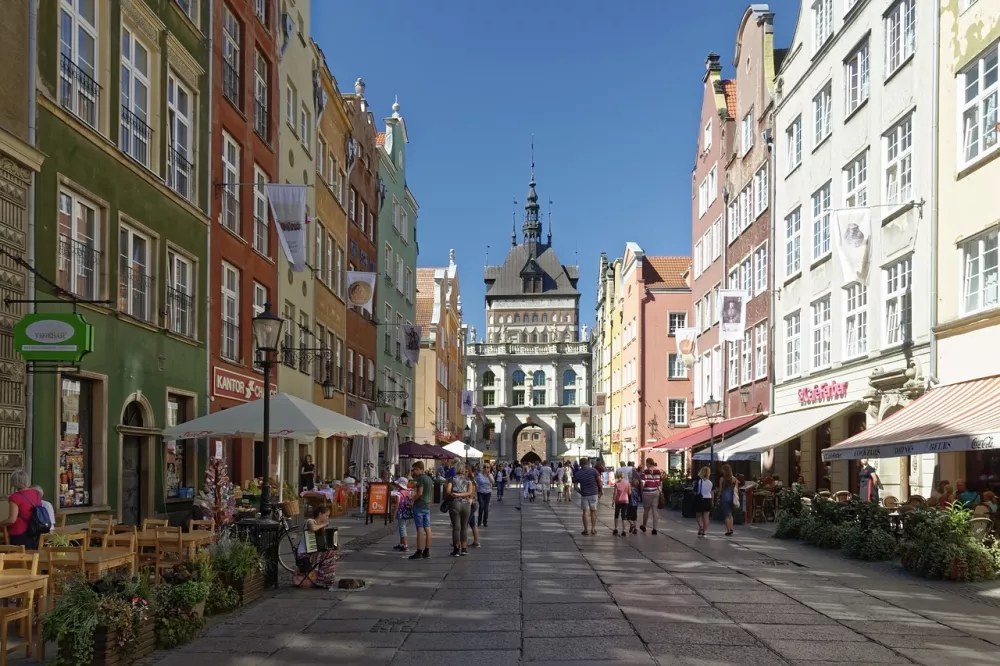
Green Gate (Zielona Brama) - A Renaissance gate at the end of the Long Market, originally built as a residence for Polish kings. Today, it houses a branch of the National Museum in Gdańsk and hosts exhibitions, conferences and official events. It takes its name from the Green Bridge, which was located nearby and connected the historic center with Sýpek Island.
Address: Long Market 24, Gdańsk.
Marian Church (Bazylika Mariacka) - One of the largest brick churches in the world and the longest church in Poland, it measures 107 meters and can accommodate up to 25,000 people. You can admire the impressive interiors and a wonderful view of the city from the church tower, which is 82 meters high. Inside the church you will also find an astronomical clock.
Address: Podkramarska 5, Gdańsk.
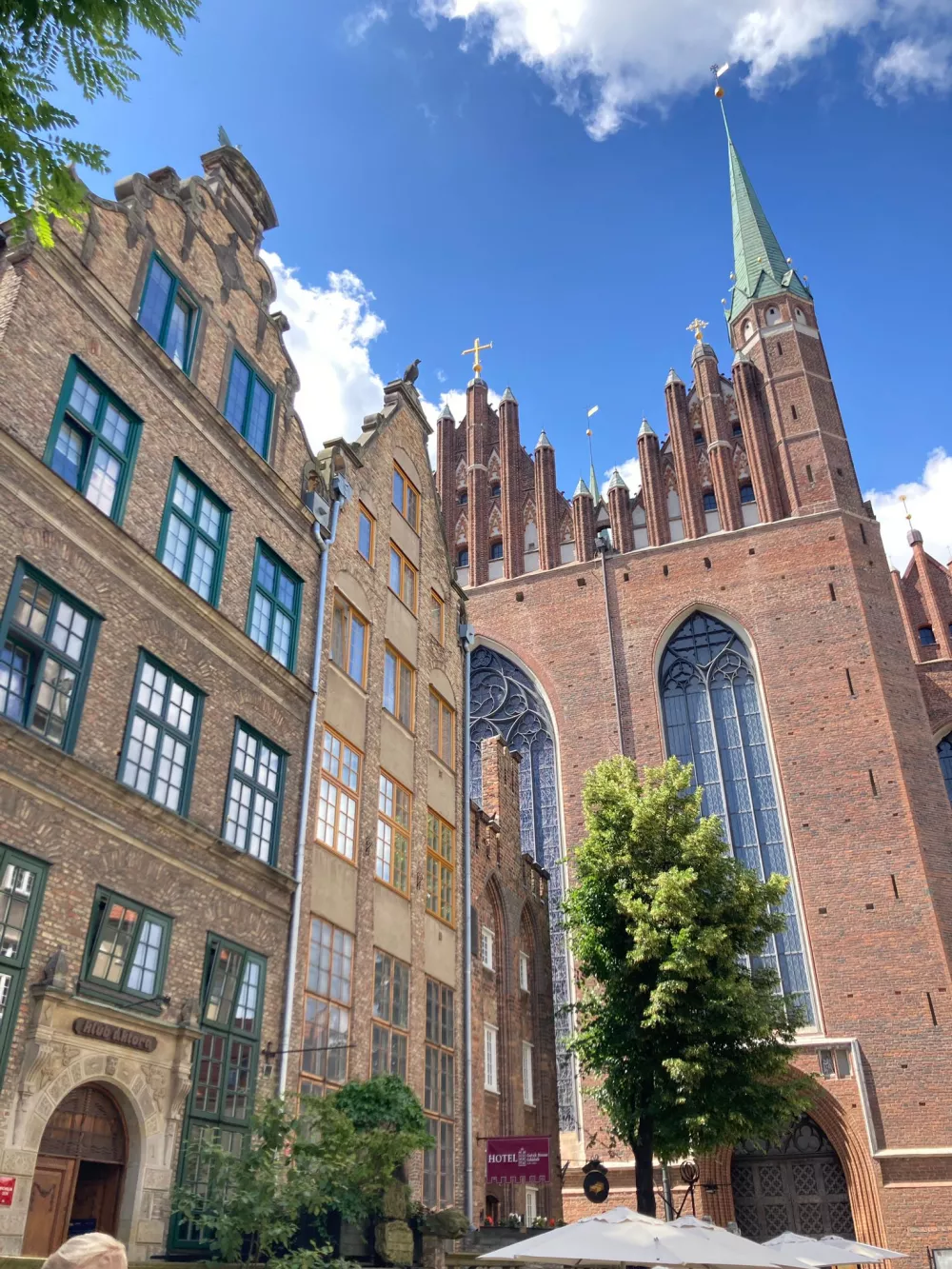
National Museum in Gdańsk (Muzeum Narodowe w Gdańsk) - The museum, with its rich art collection, including Hans Memling's "The Last Judgment", is housed in a historic 15th-century Franciscan monastery. In addition to its permanent exhibitions, the museum also hosts temporary exhibitions, workshops and cultural events, introducing visitors to the rich history and cultural heritage of Gdańsk and the region.
Address: Toruńska 1, Gdańsk.
Žuraw (Gdańsk Crane) - A historic port crane from the 14th century, one of the most famous symbols of Gdańsk. It was used for loading and unloading goods, but also as a city gate. The crane was powered by human power - men pedaled in huge wheels with a diameter of about 6 meters. Thanks to this mechanism, the crane was able to lift up to 4 tons of cargo to a height of 11 meters.
Address: Długie Pobrzeże 23, Gdańsk.
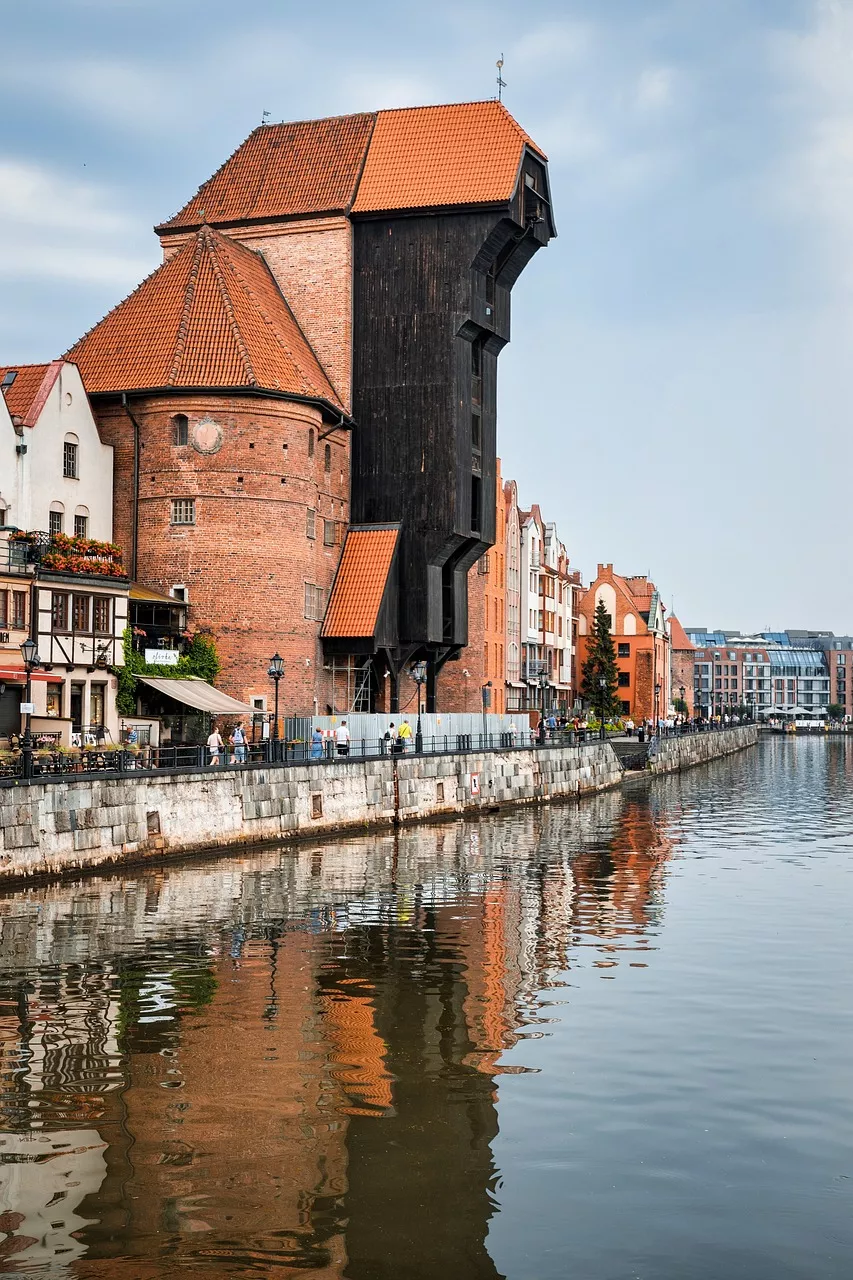
Museum of the Second World War (Muzeum II Wojny Światowej) - A modern museum with an extensive exhibition dedicated to the events of World War II offers an interactive and emotionally powerful experience. The permanent exhibition covers an area of almost 5,000 m² and is located 14 meters underground. The museum aims to introduce visitors not only to facts and figures about the war, but also to personal stories of ordinary people who were most affected by the war.
Address: Plac Władysława Bartoszewskiego 1, Gdańsk.
European Solidarity Center (Europejskie Centrum Solidarności) - A museum and cultural center dedicated to the history of the Solidarity movement and its leader Lech Wałęsa. The Solidarity movement played a key role in the fall of communism in Central and Eastern Europe. It is located near the former Lenin Shipyard, where the Solidarity movement began its famous strike in 1980.
Address: Plac Solidarności 1, Gdańsk.
Westerplatte - A sandy peninsula in Gdańsk, where World War II began on September 1, 1939. There is a memorial and museum here commemorating the defense of the Polish garrison against the German attack. It was here that the German cruiser Schleswig-Holstein launched an attack on the Polish military garrison defending the transit depot. A 25-meter-high monument made of granite blocks was erected here in 1966 in memory of the defenders of Westerplatte.
Address: Majora Henryka Sucharskiego 70, Gdańsk.
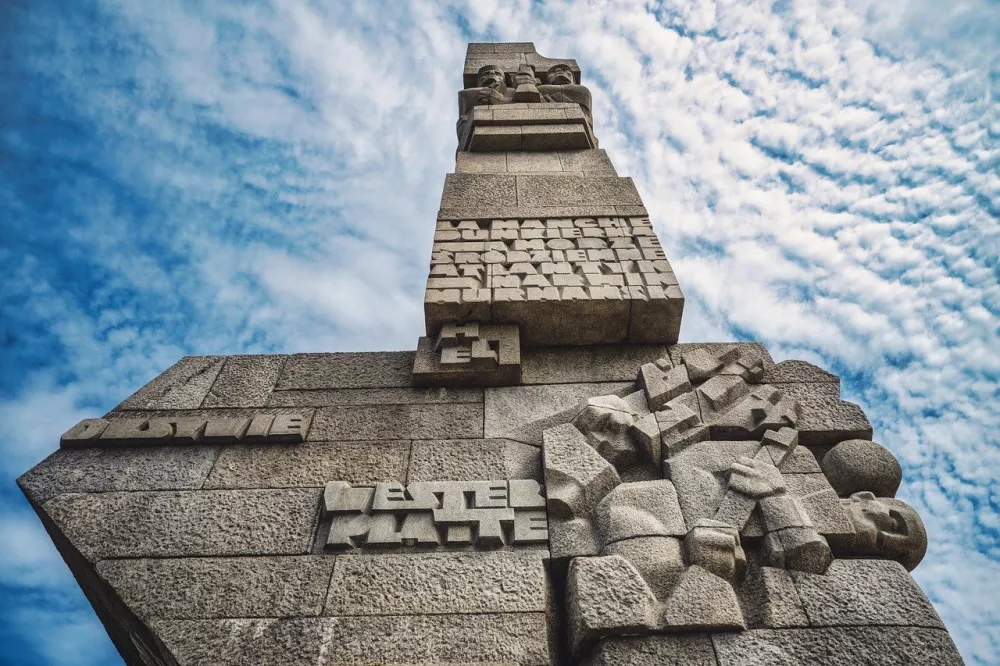
Gdańsk Shipyard - Historical shipyards, where the Solidarity movement was based in the 1980s. Today you can visit several memorials and museums dedicated to this important chapter in Polish history. One of the largest shipyards in Poland, it produces various vessels from small sailboats to large container ships.
Address: Na Ostrowiu 15/20, Gdańsk.
AmberSky - If you want to see Gdańsk from above, you can go to the 50-meter-high AmberSky Ferris wheel on the waterfront - from there you can see the historic center of the city, the Motlawa River, the shipyards and the famous Żuraw crane. The wheel has 36 air-conditioned cabins, one of which is a VIP with a glass floor, leather seats, a TV and a refrigerator. Each cabin can accommodate up to 8 people.
Address: Ołowianka 1, Gdańsk.
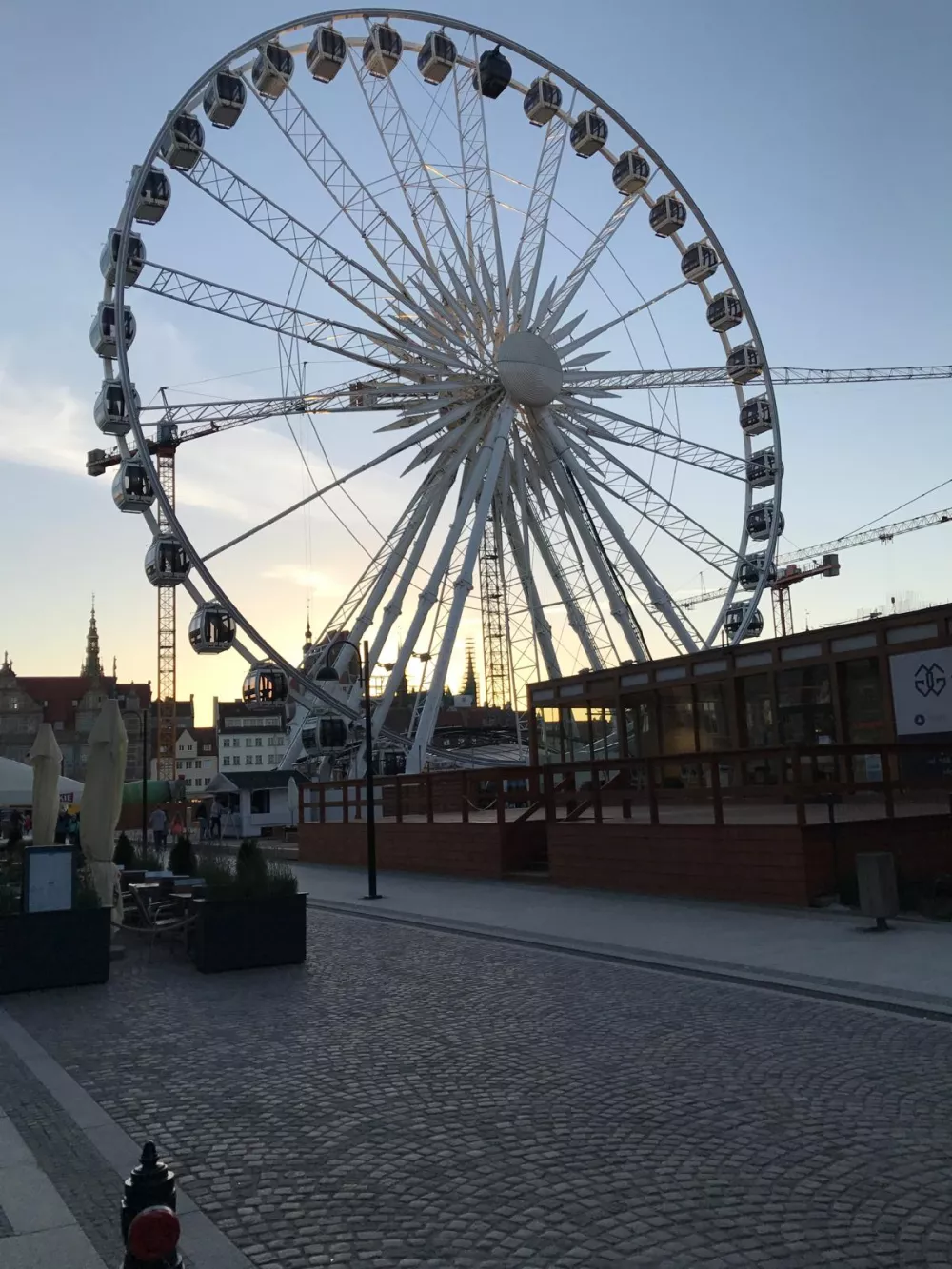
Gdansk Beach and Promenade - Gdańsk's beaches are among the most beautiful on the Polish Baltic coast and are connected by a long promenade, which allows for walks and cycling trips between different parts of the city and neighboring resorts, such as Sopot. The most famous and most visited is Brzeźno Beach, which boasts a wide strip of fine sand, cleanliness and a gradual entrance to the sea, which will be appreciated especially by families with children. You can use modern facilities here, you will find showers, changing rooms, refreshments and a long wooden pier that extends into the sea and offers beautiful views of the coast.
Address: Gdańsk.
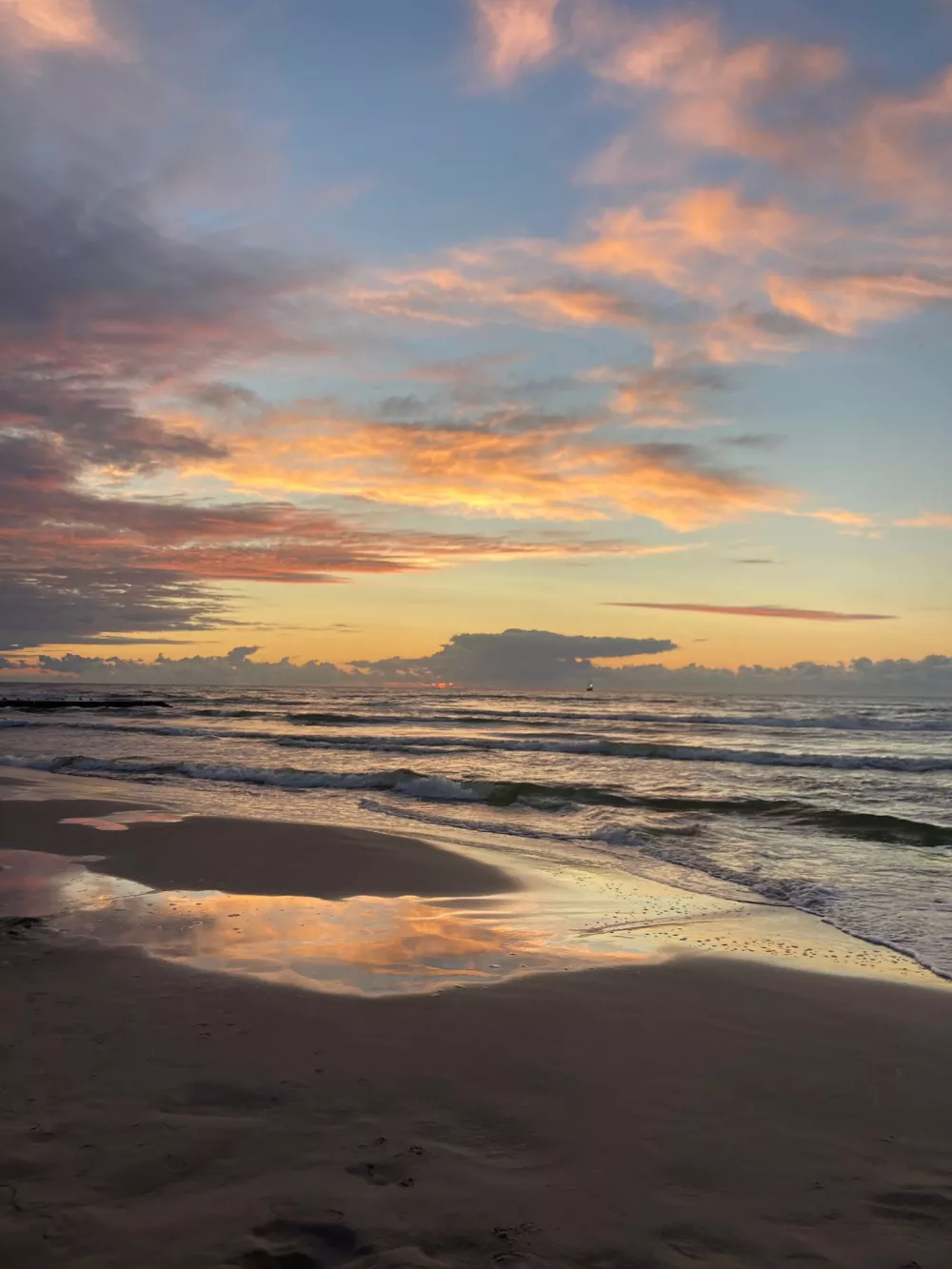
Accommodations
In picturesque Gdańsk, you can choose from a wide range of accommodation from apartments to hotels, guesthouses, hostels and villas. They will be chosen by lovers of luxury and backpackers looking for the cheapest possible overnight stay. Many accommodation facilities are located a short distance from the beach.
You can enjoy luxurious accommodation, for example, in the 5* hotel Podewils Old Town Gdansk, which is located in the city center, next to the famous Žuraw crane. Breakfast and other meals can be enjoyed in the restaurant with a terrace overlooking the river. At the 24/7 reception, they can arrange transfers, money exchange, luggage storage, sauna, car rental or bike rental.
Accommodation in the countryside far from the busy center is offered by the 3* Hotel Platan. You can relax in the garden, on the sunny terrace or in the wellness area with a sauna and the option of a spa package. You can also rent social spaces in the hotel.
The 2* Hotel Vesper House is located a short distance from the city center. You can stay in a single or double room or in a larger family room. The 24-hour reception will provide you with information, the possibility of transportation to the airport, luggage storage or laundry service. You can park directly in the building.
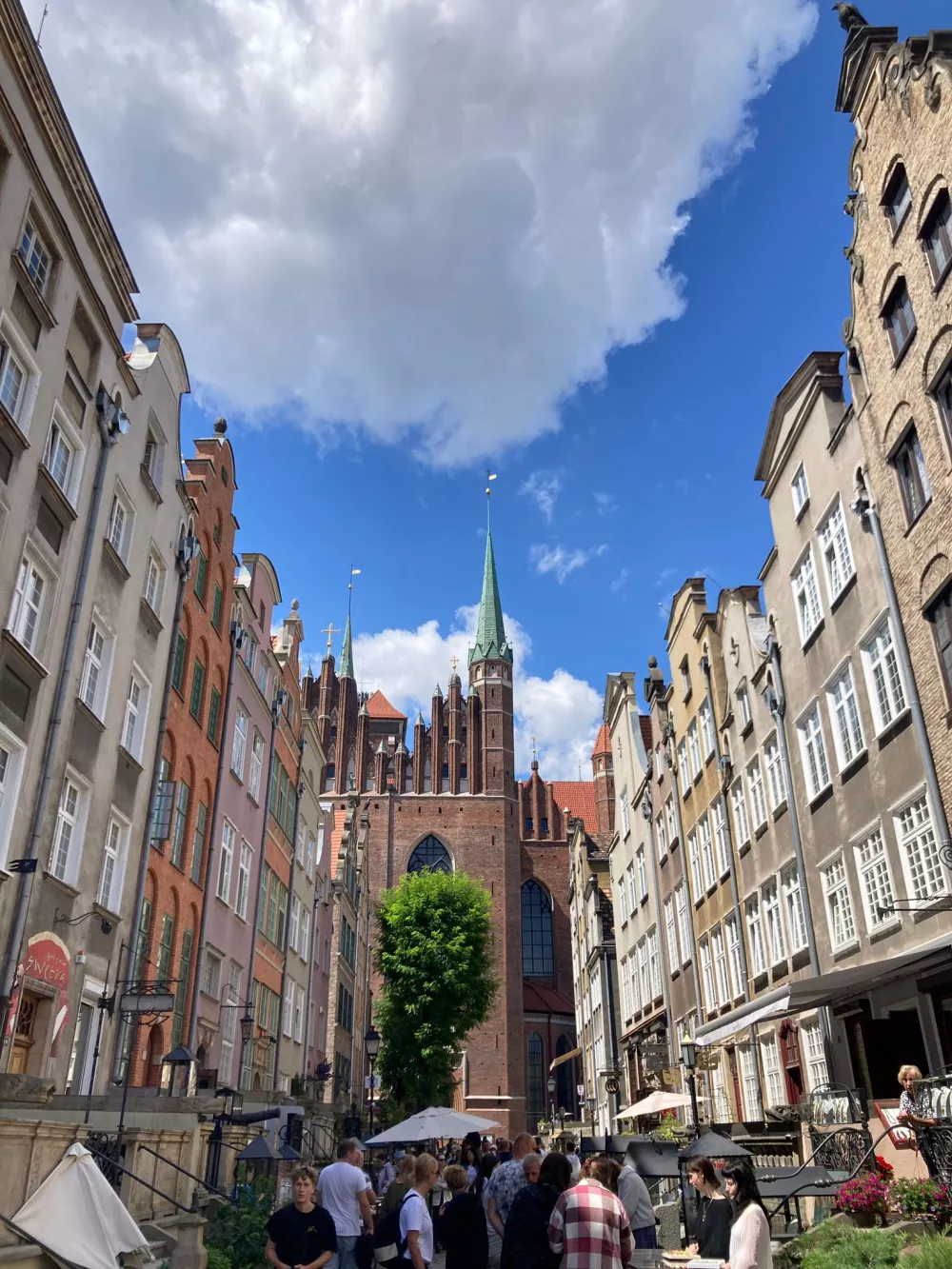
The smaller guesthouse Noclegi nad Morzem u Kasi offers accommodation near the beach. The guesthouse does not offer breakfast, but you can use the shared kitchen to prepare your own food. You can stay here in a two-, three- or four-bed room.
The pleasant guesthouse Villa AgaTomDom is located near the city center. It offers a garden with a barbecue and a terrace. Children will have fun on the children's playground. You can prepare breakfast and other meals in the shared kitchen.
The classic hostel Hostel Mamas & Papas offers accommodation both in shared rooms and in private double rooms. Accommodation includes breakfast, guests have a fully equipped shared kitchen. The hostel also has a garden with a barbecue. Here you can rent a bike or store your luggage.
For a complete offer of accommodation in Gdańsk, we recommend using A-HOTEL.com or Booking.com.
Typical food and drink
Gdańsk, like the rest of the Polish coast, has its own specific gastronomy, influenced by the proximity of the Baltic Sea, historical influences and local traditions.
Śledź (herring) - Very popular herring is served in many ways - marinated, pickled, with onions or in a cream sauce.
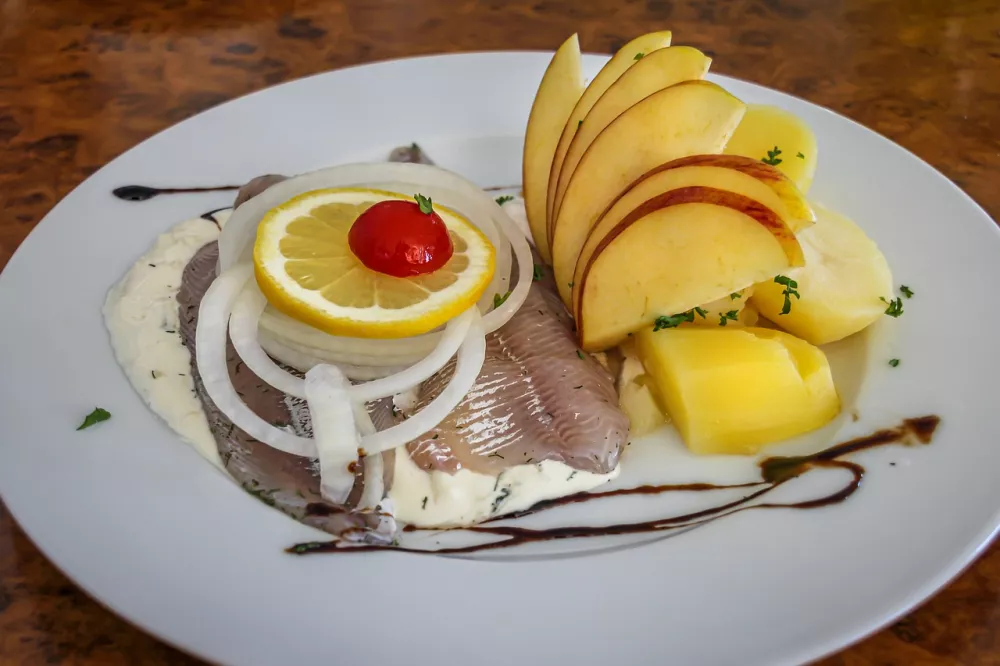
Ryba smażona (fried fish) - Fresh fish, such as cod or flounder, fried in or without batter.
Zupa rybna (fish soup) - A thick and rich soup prepared from various types of fish, often with the addition of vegetables and spices.
Bigos - A traditional Polish dish made from sauerkraut, fresh cabbage and various types of meat and sausages. It is often cooked for several days to allow the flavors to blend well.
Borscht – deep red beetroot soup is not eaten with a spoon in Gdańsk, but drunk from a mug with ears.
Beer - Gdańsk and its surroundings have a long tradition of brewing. Local breweries offer a wide range of beers from light lagers to dark stouts.
Coffee - Gdańsk has a growing coffee culture with many cozy cafes where you can enjoy quality coffee and local desserts such as cheesecake, poppy seed or honey gingerbread.
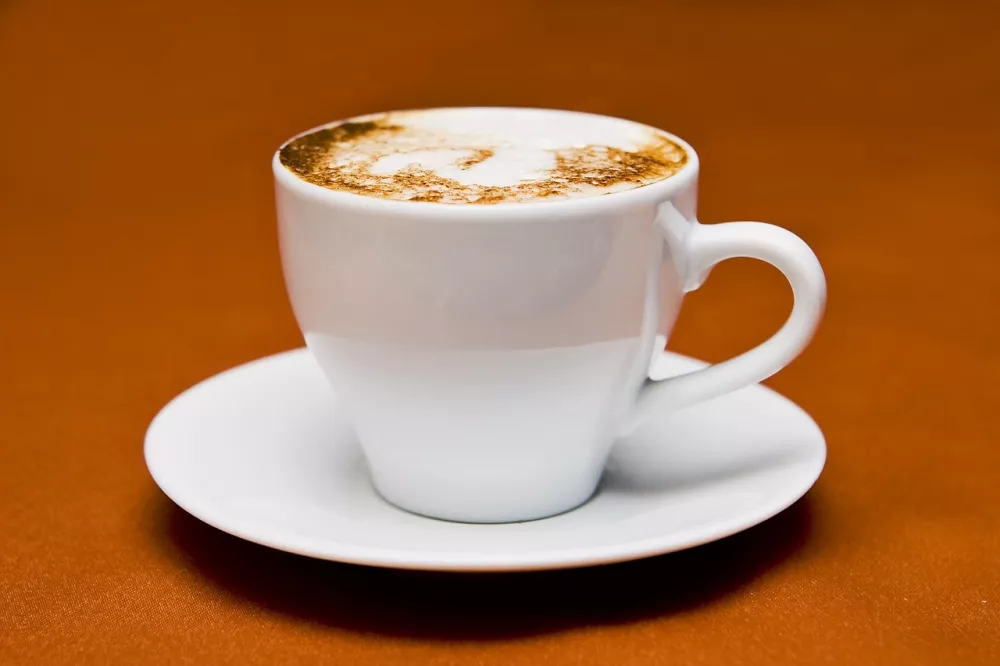
Practical advice for the trip
Mariánská Street (Mariacka) is one of the most romantic streets in Gdańsk. It is lined with small shops, pubs and cafes. Here you can buy jewelry with amber, which is mined on the local Baltic coast.

If you get tired after visiting the historical monuments, during the summer months you can relax on one of the local beaches (Stogi, Molo Gdańsk Brzeźno or Jelitkowo).
How do you get to Gdańsk? Gdańsk Lech Wałęsa International Airport (GDN) is located approximately 12 km from the city center. You can get to the center from the airport by bus, train or taxi.
Gdańsk has well-functioning rail connections with other Polish cities. Gdańsk Główny Central Station is located a short distance from the city center.
Gdańsk has a well-developed public transport network including buses, trams and urban trains (SKM). Tickets can be bought in machines, kiosks or via mobile applications.
You can walk through the city center and discover the hidden corners of the Old Town.
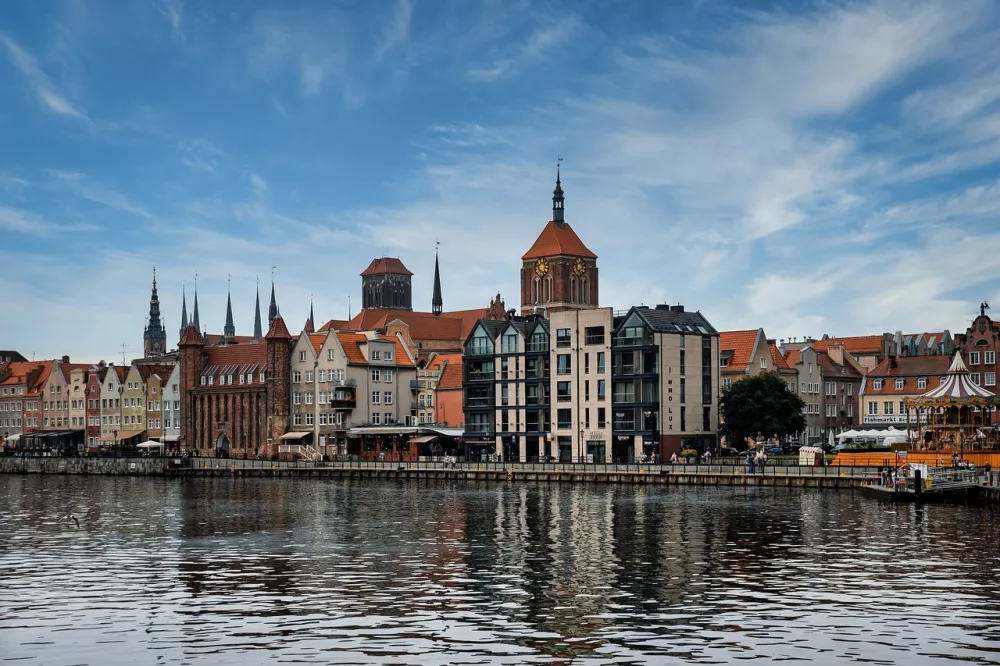
Gdańsk has an extensive network of bike paths and city bike services (e.g. MEVO) that you can rent.
Eating out in Gdańsk is affordable. Lunch at a mid-range restaurant will cost you around PLN 20-40.
What to pack? Wear light clothing in the summer, but don't forget a sweater or jacket for cooler evenings. In winter, equip yourself with warm clothes. Rainy days are not uncommon in Gdańsk, so an umbrella or raincoat can be useful.
Poles are generally friendly and polite. Basic greetings like "Dzień dobry" (good day) and "Do widzenia" (goodbye) will make the locals happy.
👍 Our tip: Amber Museum. The museum shows the history and processing of amber in the region. It is located in a former prison and offers truly unusual exhibitions - from prehistoric plants and animals encased in amber to artistic jewelry. You can find it at Wielkie Młyny 16.
Weather
Gdańsk has a mild maritime climate, influenced by its proximity to the Baltic Sea. This climate is characterized by mild winters and cool summers.
Average temperatures from December to February range from -2°C to 3°C. Nighttime temperatures may drop below freezing, but there is no danger of extremely cold temperatures.
It often rains or snows, but the snow does not last very long.
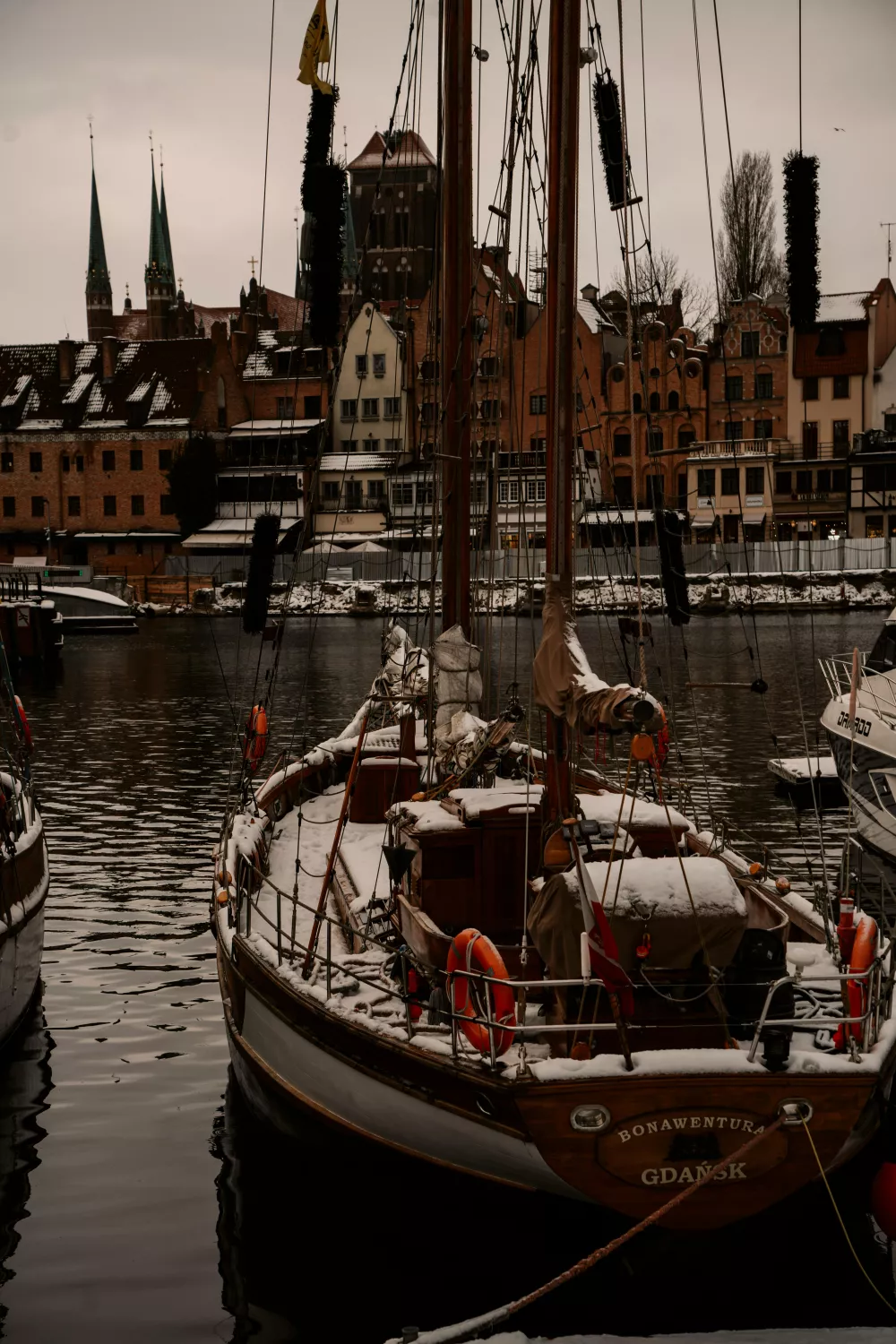
In spring, it starts to get warmer (3-15°C) and the days get longer. You will encounter regular light rains.
Average summer temperatures range from 15°C to 23°C, while daily maximums can sometimes exceed 25°C. At night, the temperature usually drops to 12-15°C. In summer you can expect intense rains or thunderstorms.
In autumn, average temperatures drop from 15°C in September to 5°C in November. You can expect rainy days. Autumn leaves and changeable weather give the city a specific atmosphere.
Due to its proximity to the Baltic Sea, Gdańsk can be windy all year round. Stronger winds are especially dangerous in spring and autumn.
Celebrities
Johannes Hevelius (1611-1687) - Famous astronomer and mathematician, founder of lunar topography. Heweliusz was born and lived in Gdańsk, where he had his own observatory and published important astronomical works. He also brewed beer here.
Gabriel Fahrenheit (1686-1736) - Inventor and physicist, best known for creating the temperature scale that bears his name - the Fahrenheit scale. He was born in Gdańsk.
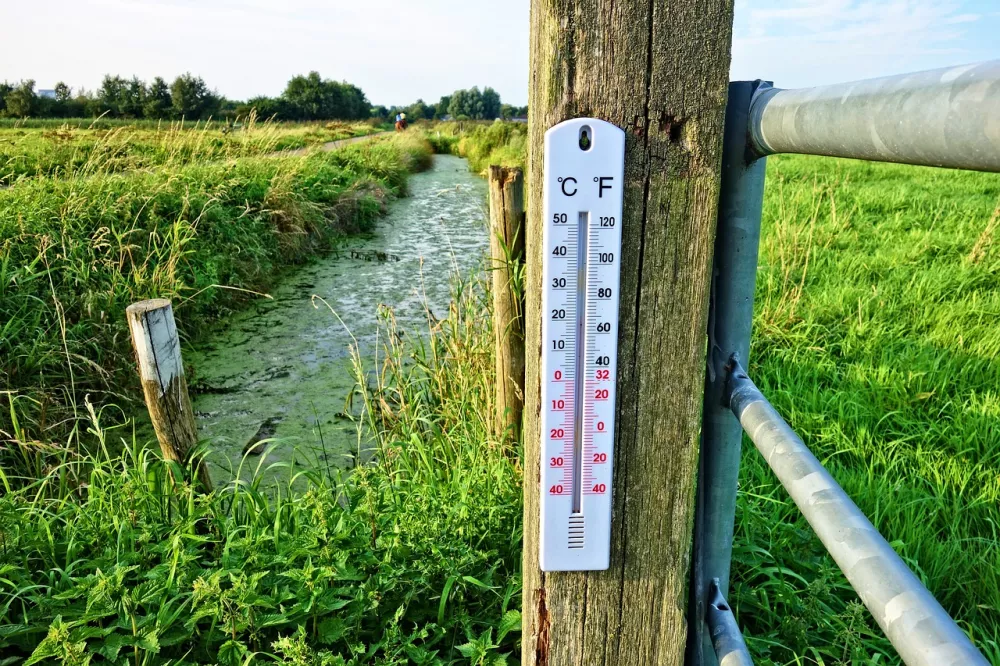
Arthur Schopenhauer (1788-1860) - Philosopher known for his pessimism and his work "The World as Will and Imagination". He was born in Gdańsk, although his family later left the city.
Lech Wałęsa (born 1943) - Electrician who became the leader of the Solidarity movement, the first independent trade union movement in the communist bloc, and later President of Poland (1990-1995). Wałęsa received the Nobel Peace Prize in 1983 for his contribution to the fall of communism in Poland. It is closely associated with Gdańsk, where the Solidarity movement began.
Günter Grass (1927-2015) - German writer, poet, playwright and sculptor who received the Nobel Prize for Literature in 1999. Grass was born in Gdańsk and his most famous work, "The Tin Drum", was partly inspired by his childhood in that city .
Donald Tusk (1957) - Polish politician, Prime Minister of Poland (2007-2014 and again from 2023) and President of the European Council (2014-2019). Tusk was born in Gdańsk and has a significant influence on Polish and European politics.
Leszek Możdżer (1971) - World-renowned jazz pianist and composer who hails from Gdańsk. Możdżer has an innovative approach to jazz and collaborates with many international artists.
